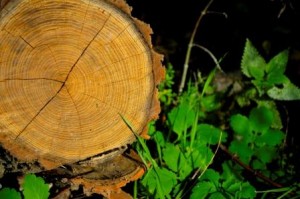Are you considering installing a new hardwood floor, but want to stay true to your earth-friendly ideals? Are you worried about how many beautiful trees need to be cut down in order to produce your new floors? You’re in luck!

You may not know this, but hardwood floors are known to be very ecologically sound. They come from trees, a sustainable and natural resources. Unfortunately, trees haven’t always been considered a sustainable resource. In the past, wood was cut down without any thought as to what could happen in the long run to the forest.
Today, the timber used to engineer hardwood floors is cut from forests that are managed in a way to ensure resources for future use. According to statistics from the U.S. Forest Service, just about twice the amount of hardwood timber is put back each year when new growth is harvested.
Furthermore, from time to time a forest can become overly dense. The result can sometimes be trees that are diseased and susceptible to fires. Small trees in the forest’s understory are the casualties of the unavoidable thinning-out process. But there’s good news… they make excellent hardwood floors!
The Forest Stewardship Council (FSC) is a nonprofit group that promotes environmentally responsible forestry practices. Wood that is certified by the FSC meet strict criteria related to forest management and ecological concerns. There are a wide range of flooring woods that come with the FSC stamp, including cherry, maple, birch, ash, Douglas fir, oak and more.
Bamboo is another earth conscious choice. Ironically, bamboo hardwood floors are not made out of wood at all… bamboo is a plant (essentially a grass), not a tree. The benefit is that it is fast growing, taking only 5-7 years to reach full growth. Using bamboo as flooring can gradually decrease the rate of deforestation in forests and timberlands.
One eco-friendly alternative to new hardwood flooring is reusing another old hardwood floor. One main benefit to a reclaimed or salvaged wood floor is that it is one of the only green ways to get old-growth wood, particularly rare or extinct species such as American chestnut.
To take it even farther… after the install process, you can continue your efforts to lessen your home’s impact on the Earth by choosing water-based products. They are less energy-intensive to manufacture, less polluting when disposed of, and less threatening to indoor air quality.





